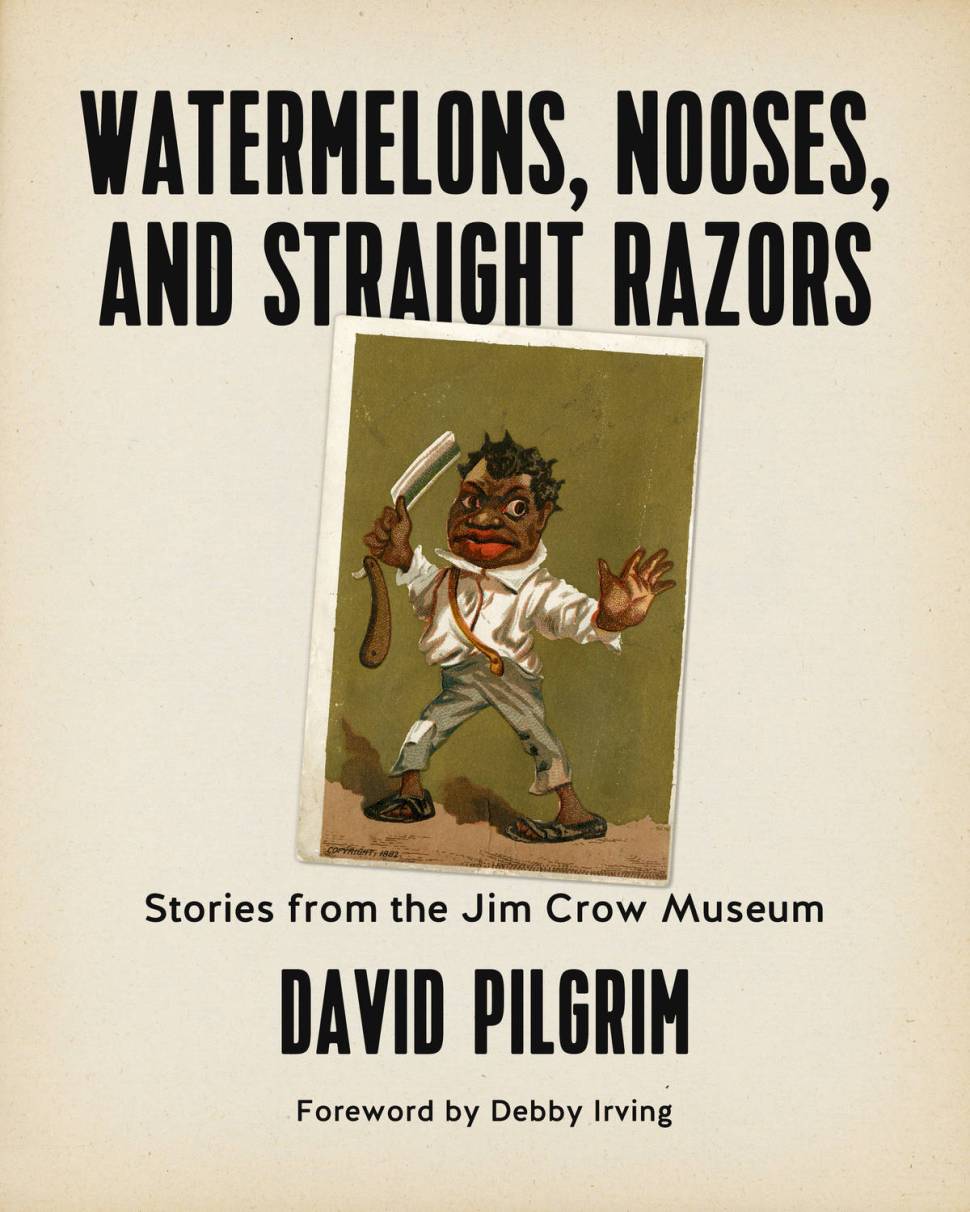Jim Crow Museum
1010 Campus Drive
Big Rapids, MI 49307
[email protected]
(231) 591-5873
Dr. David Pilgrim wrote a short synopsis of his upcoming book, Watermelons, Nooses, and Straight Razors: Stories from the Jim Crow Museum for BoingBoing.
I spent more than three decades collecting Ku Klux Klan robes, segregation signs,
and thousands—literally thousands—of everyday objects that depicted African Americans as obedient servants, childlike
buffoons, exotic savages, hypersexual deviants, and, most consequentially, menacing
predators. I collected these objects because I believed—no, I knew—that objects, even
hateful ones, could be used as teaching tools. In the mid-1990s, I donated the objects
to Ferris State University; later, I used the collection to found the Jim Crow Museum. Today the Jim Crow Museum is the nation’s largest collection of publicly accessible
racist objects in the United States. Our tagline doubles as our vision: “using objects
of intolerance to teach tolerance and promote social justice.”
everyday objects that depicted African Americans as obedient servants, childlike
buffoons, exotic savages, hypersexual deviants, and, most consequentially, menacing
predators. I collected these objects because I believed—no, I knew—that objects, even
hateful ones, could be used as teaching tools. In the mid-1990s, I donated the objects
to Ferris State University; later, I used the collection to found the Jim Crow Museum. Today the Jim Crow Museum is the nation’s largest collection of publicly accessible
racist objects in the United States. Our tagline doubles as our vision: “using objects
of intolerance to teach tolerance and promote social justice.”
Visitors to the Jim Crow Museum come from every state and dozens of countries. Not surprisingly, the number of visitors has increased in the last two years and the conversations are more intense—in no small part because of the growing racial divide in the country. The museum encourages the “triumph of dialogue,” and visitors to the museum welcome discussions about difficult topics, among them caricatures and stereotypes, the word “nigger,” institutional poverty, voter identification laws, police brutality, mass incarceration, and the rise and mainstreaming of white supremacy groups. They want to know how we, this nation, got to where we are.
I remember the conversations that occurred after the shooting of Walter Scott, an
unarmed black man fatally shot by Michael Slager, a white North Charleston police
officer. Scott was stopped for having a non-functioning brake light. A video surfaced
of Slager shooting Scott from behind while Scott fled, which contradicted the initial
police report. We talked about Walter Scott, Tamir Rice, Michael Brown, Trayvon Martin,
and Eric Martin—and we talked about decades-old depictions of black men as brutes.
The brute caricature of black men as innately savage, animalistic, destructive, and
criminal, deserving punishment and even death, is one of the many antiblack caricatures
central to the stories that are told about young black men. It is an unfortunate truth
that not all caricatures and stereotypes die. Some morph into the present.
Watermelons, Nooses, and Straight Razors uses images from the Jim Crow Museum to explore many stories and their accompanying stereotypes and caricatures, which underpin the mistreatment of African Americans. Some of the stories are innocuous though irritating, such as the silly belief that black people are obsessed with watermelons. Some of the stories are nasty and mean-spirited, such as the many depictions of African Americans as monkeys or other simians. Stories that question the humanness of a people are demeaning, but there are other stories that are even more unsettling. I am speaking here of stories about the horrible things done to black lynching victims. Americans tend to like happy history. We like the history that can be celebrated with good food, dancing, parades, and fireworks. But there is nothing happy about the torture of more than 4,000 African Americans in this country. And though you will rarely see it written, there was a parallel practice just as ghoulish: the use of black people’s skin to make leather products. In the Jim Crow Museum we read and examine dozens of newspaper accounts from the 1870s to the 1920s telling stories about the skins of black people—not always lynching victims—being tanned and made into purses, wallets, belts, book covers, shoes, and razor strops. These accounts were presented in newspapers in matter-of-fact, nonjudgmental ways. To understand these practices is to better understand what it meant to be a black person during the Jim Crow period—and to better understand the roots of American racism. At the conclusion of each chapter of Watermelons, Nooses, and Straight Razors, I tell a brief story from my journey as a way of countering the negative narratives and tropes.
All these stories matter. They matter to the white supremacists with Tiki torches and their counterprotesters in Charlottesville, Virginia. They matter to the police officers who shoot unarmed black teenagers and the people who protest the injustices of the criminal justice system. They matter to the prankster who leaves a noose on a black colleague’s desk. They matter to the fraternities and sororities that darken their faces and host “ghetto parties.” They matter to politicians who pander to white anxieties. They matter to the people who are tired of talking about racism. Antiblack stories matter to us all—whether we know it or not—because they inform our race relations. These stories are told, listened to, and critiqued in the Jim Crow Museum. Watermelons, Nooses, and Straight Razors offer the stories to a broader audience, to continue the dialogue and use these stories as teaching tools for understanding our current narratives around race in this country.
David Pilgrim
Jim Crow Museum
October 2017